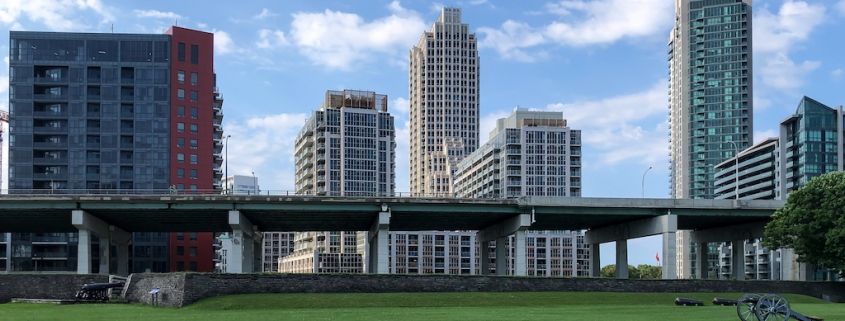Toronto’s rental housing landscape is getting hit from all sides, as high prices keep homeownership out of reach for many while a chronically undersupplied rental pool fails to keep up with rising demand.
Even as purpose-built rental construction in Canada’s largest city rises significantly, RBC senior economist Robert Hogue says the market is not on track to meet rental demand in the coming years. In fact, it’s not even going to come close.
“[A]s anyone searching for a rental unit knows, there are too few available, and they’re getting more expensive,” Hogue writes in a report published this week titled “Big city rental blues: a look at Canada’s rental housing deficit.”
In the report, the economist notes that Toronto has the largest rental unit deficit in the country as well as the second lowest vacancy rate, beaten out only by Vancouver by just 0.1 percentage points. By Hogue’s estimation, Toronto had a deficit of 9,100 rental units according to data available as of the fourth quarter of 2018. With 9,100 units added to the market at that time, Toronto would have achieved a vacancy rate of 3 percent which is considered to be at equilibrium.
The problem is that demand for rental units is set to continue to grow and accelerate in Toronto thanks to strong migration into the city and its suburbs, coupled with stubbornly high home ownership costs that show no signs of declining. The RBC economist says that the total number of rental households will increase at an average of 22,200 annually in Toronto between 2018 and 2023, by far the highest in the country. A 1.8-percent-point drop in the city’s homeownership rate is also projected to occur by 2023.
For the city to meet this demand, Hogue writes that net new contributions to the supply in the form of purpose-built rentals and new condos added to the rental pool by investor-owners would need to double. While chances of reaching rental equilibrium look much better in Vancouver and Montreal, Toronto is set to fall far short of the mark.
“In the Toronto area, purpose-built rental apartment completions surged over the past 12 months to a quarter-century high of 4,300 units,” writes Hogue. “That’s good news, but constitutes less than 20% of the required increase in the rental stock.”
The picture isn’t much better on the new condo rental front. All told, more than half of the new units for the needed rental pool expansion still must be made up, according to Hogue.
So there’s a significant and widening gap between the rental units needed to keep up with growing demand and the planned new units currently in the pipeline. Where does Toronto go from here?
Hogue acknowledges that shortages will persist in the near term but “[r]ental apartment construction must rise (and soon) to bring lasting relief.”
He writes that government housing policy must go further in addressing the rental shortage, noting that the Ford government’s June 2019 plan is a step in the right direction, but could do more to tip the scale “in favour of building new rental supply.”
“This could mean sweetening existing rental-housing construction funding programs or offering new incentives (e.g. development charge rebates) to project developers,” Hogue writes.
He also points to the City of Vancouver’s wide-ranging 10-year housing strategy as a source for inspiration. Regulating short-term rentals would also be helpful in taking units off of Airbnb and returning them to the city’s rental pool.






 Maziar Moini, Broker of Record - Home Leader Realty Inc.
300 Richmond St. W., #300, Toronto, ON M5V-1X2
Maziar Moini, Broker of Record - Home Leader Realty Inc.
300 Richmond St. W., #300, Toronto, ON M5V-1X2



